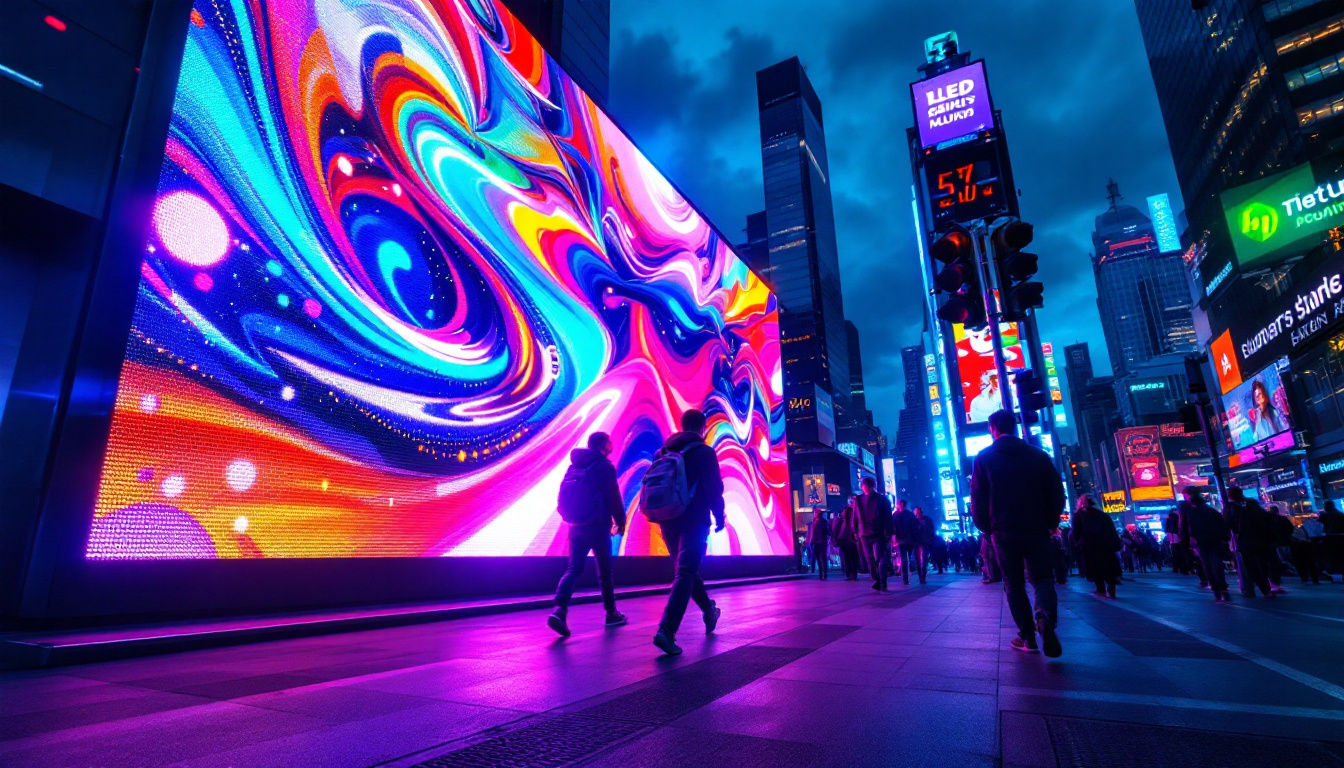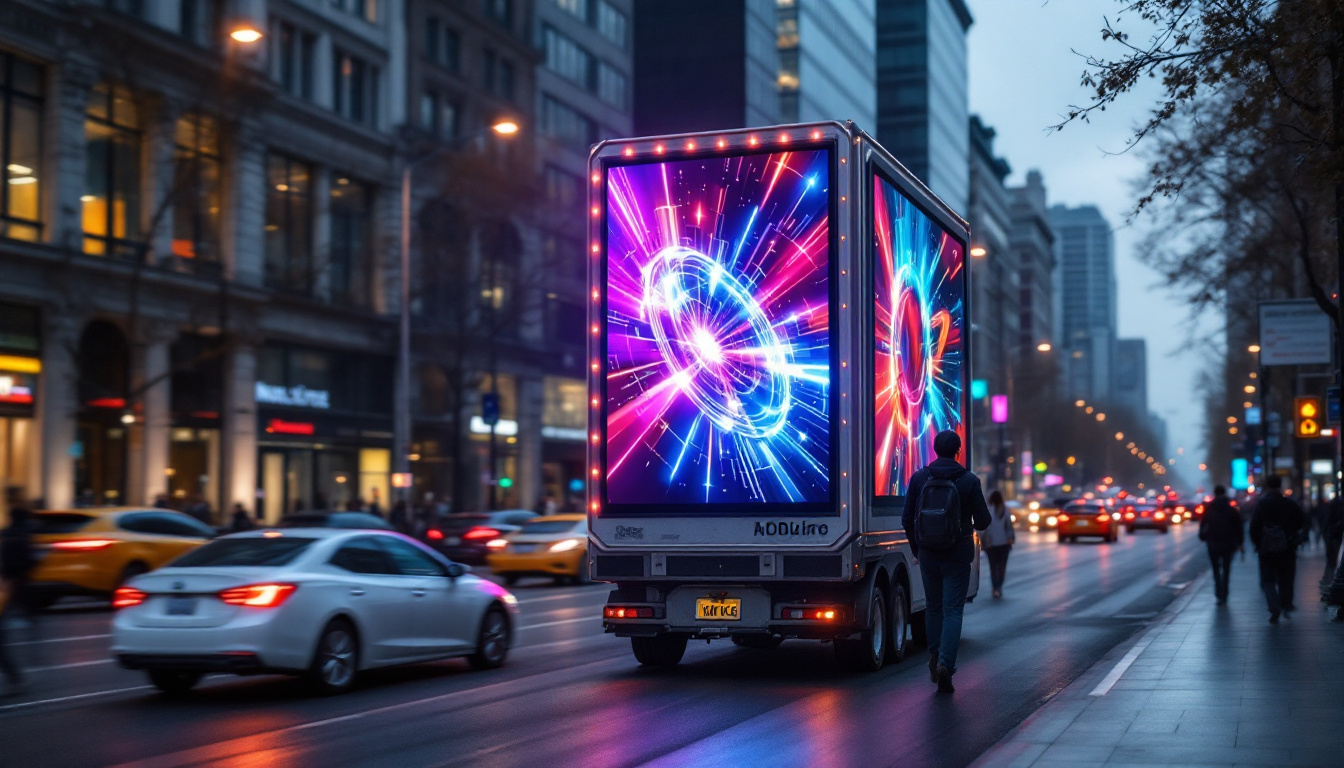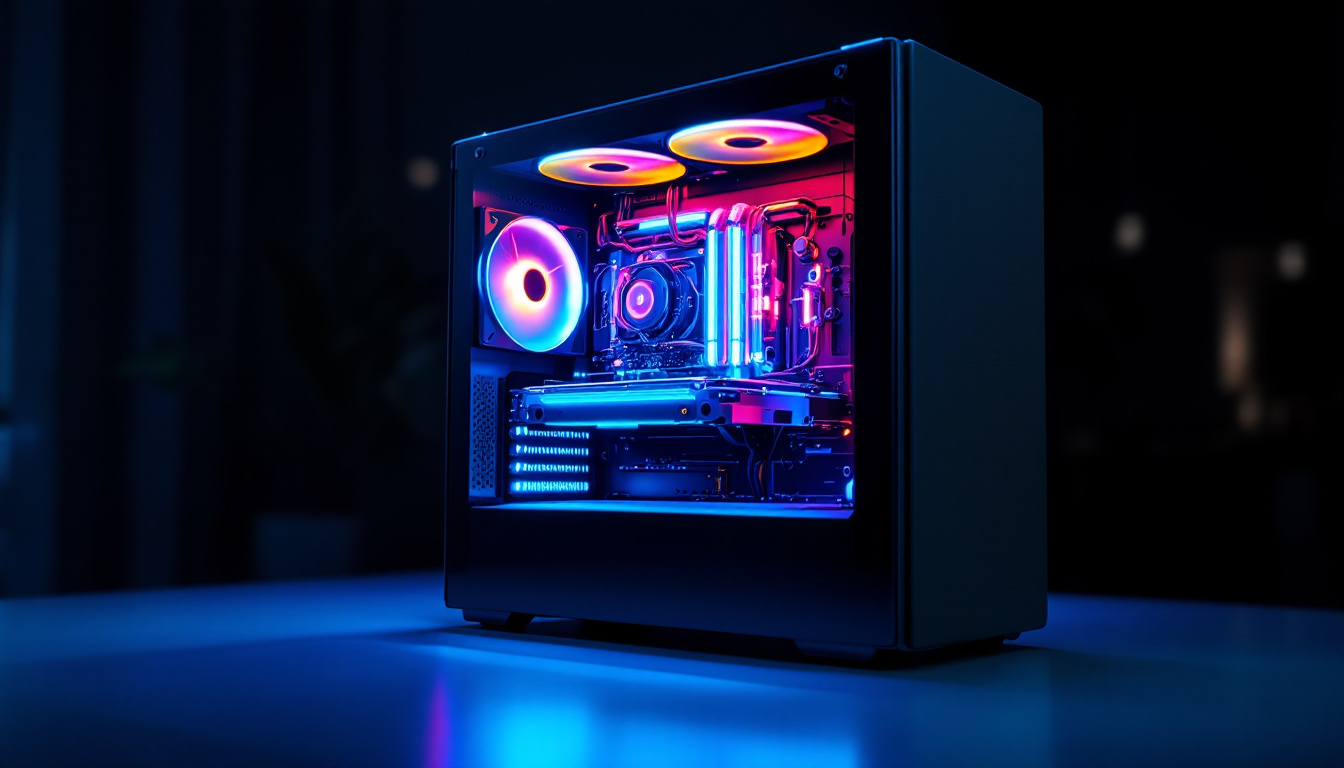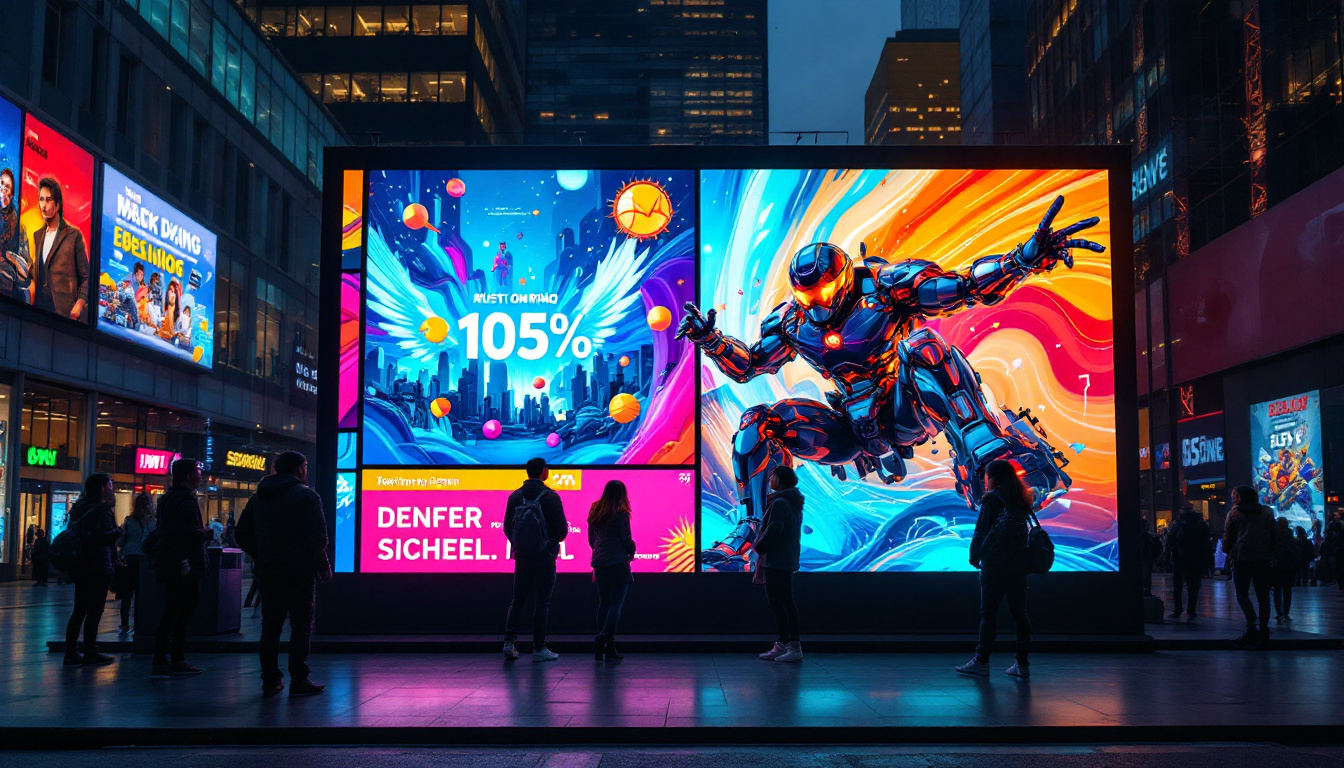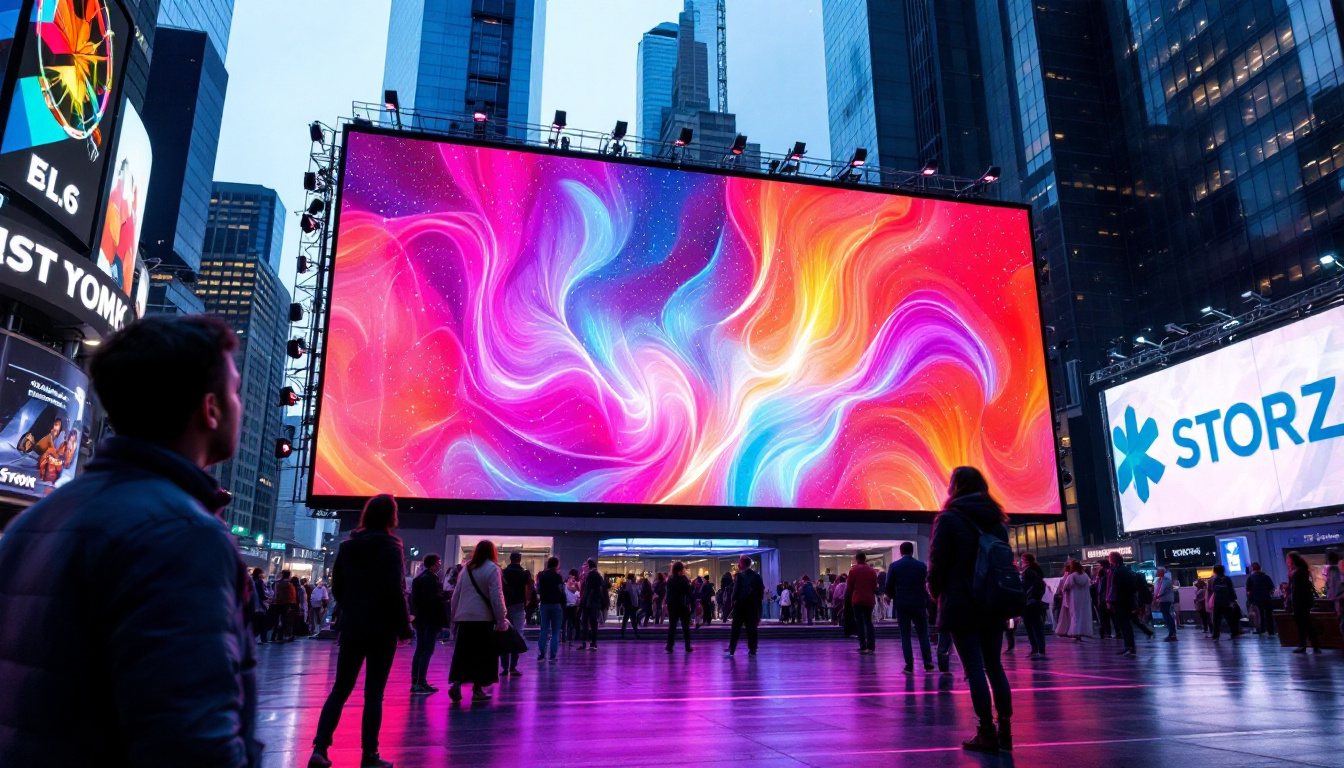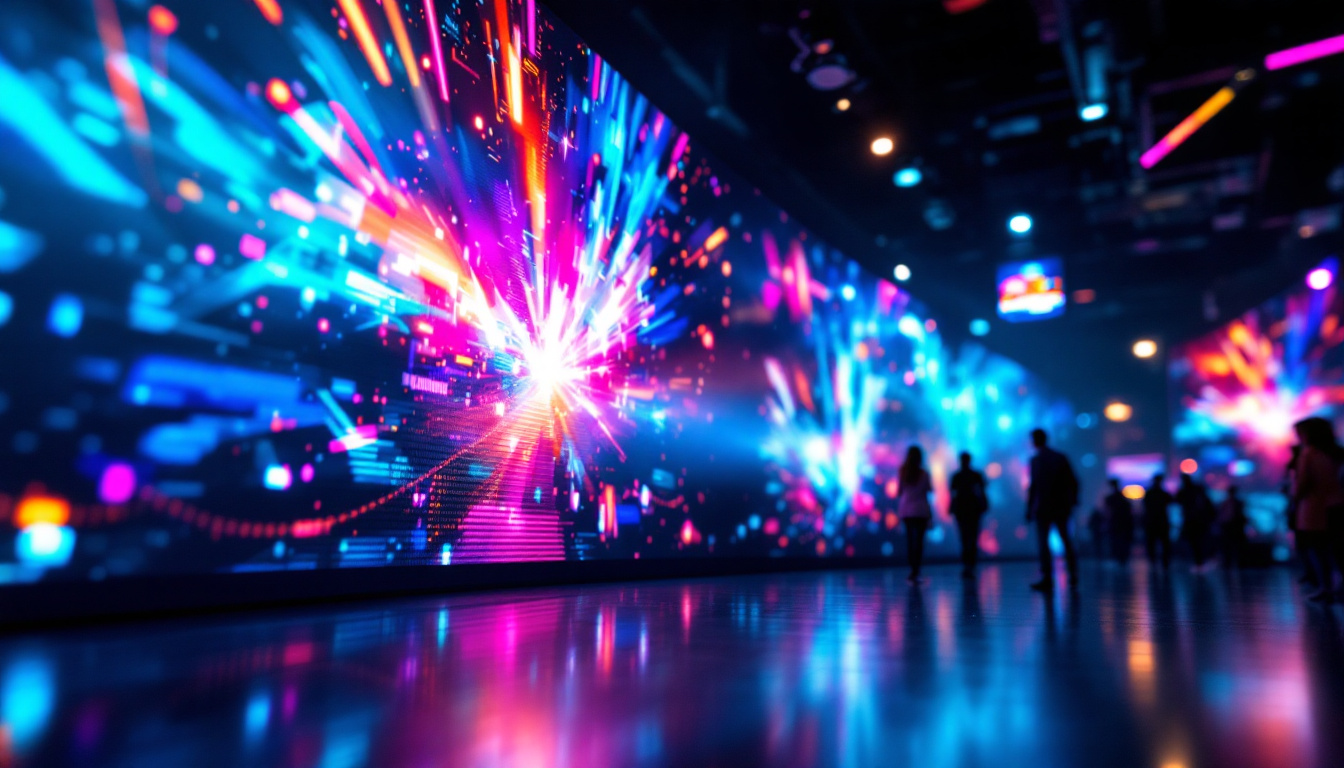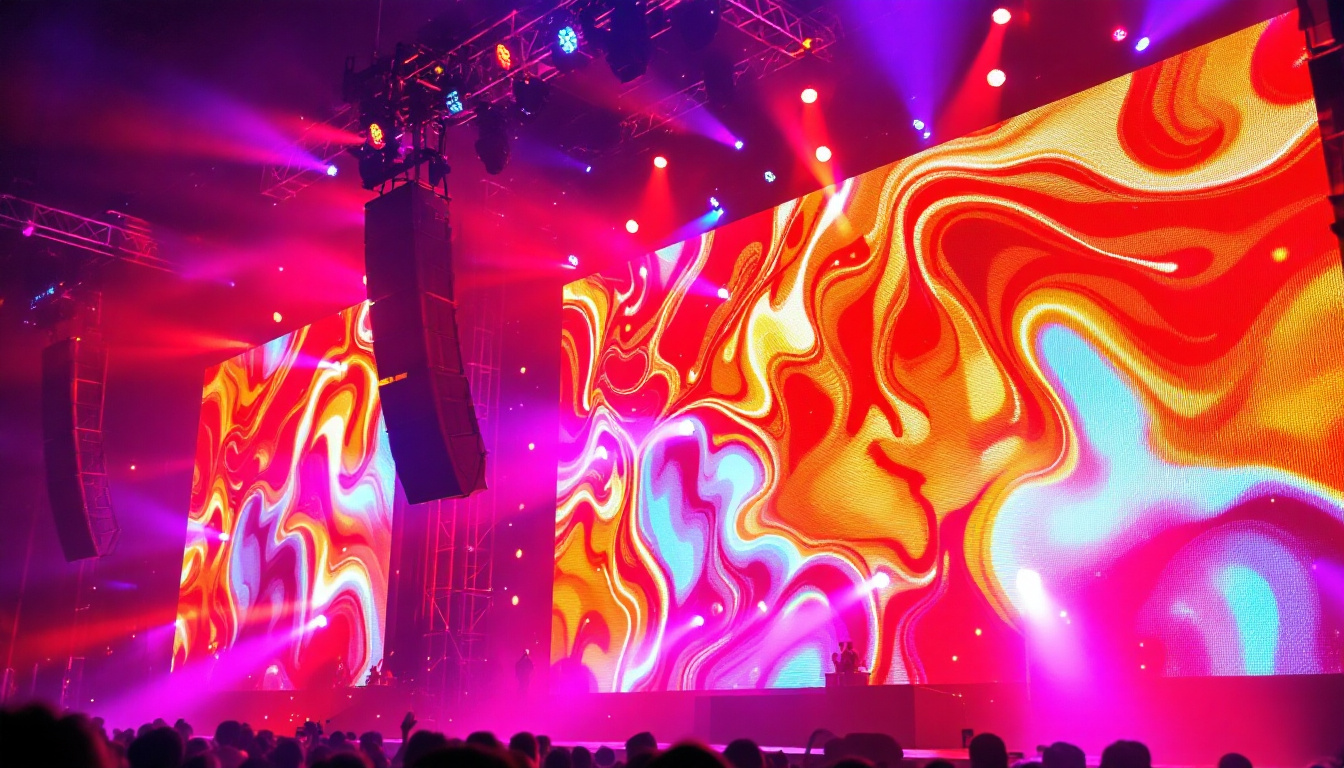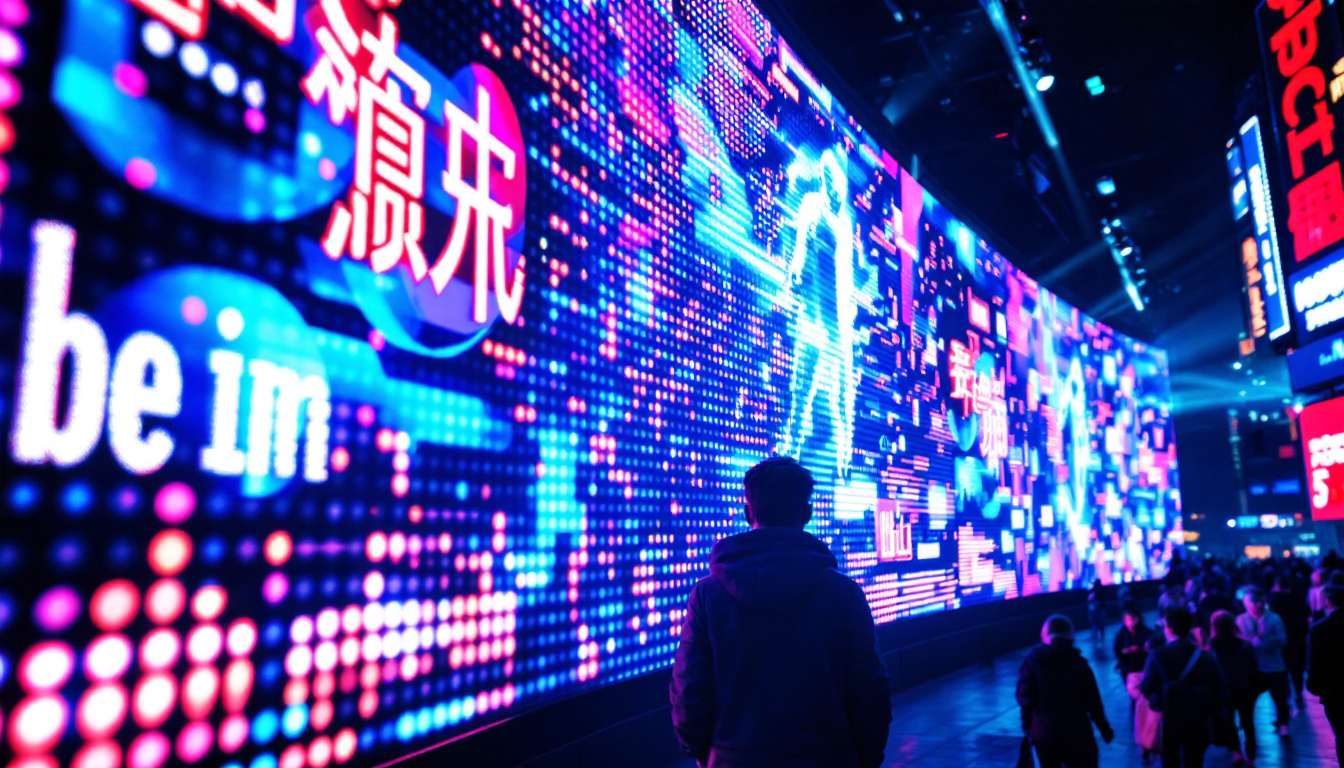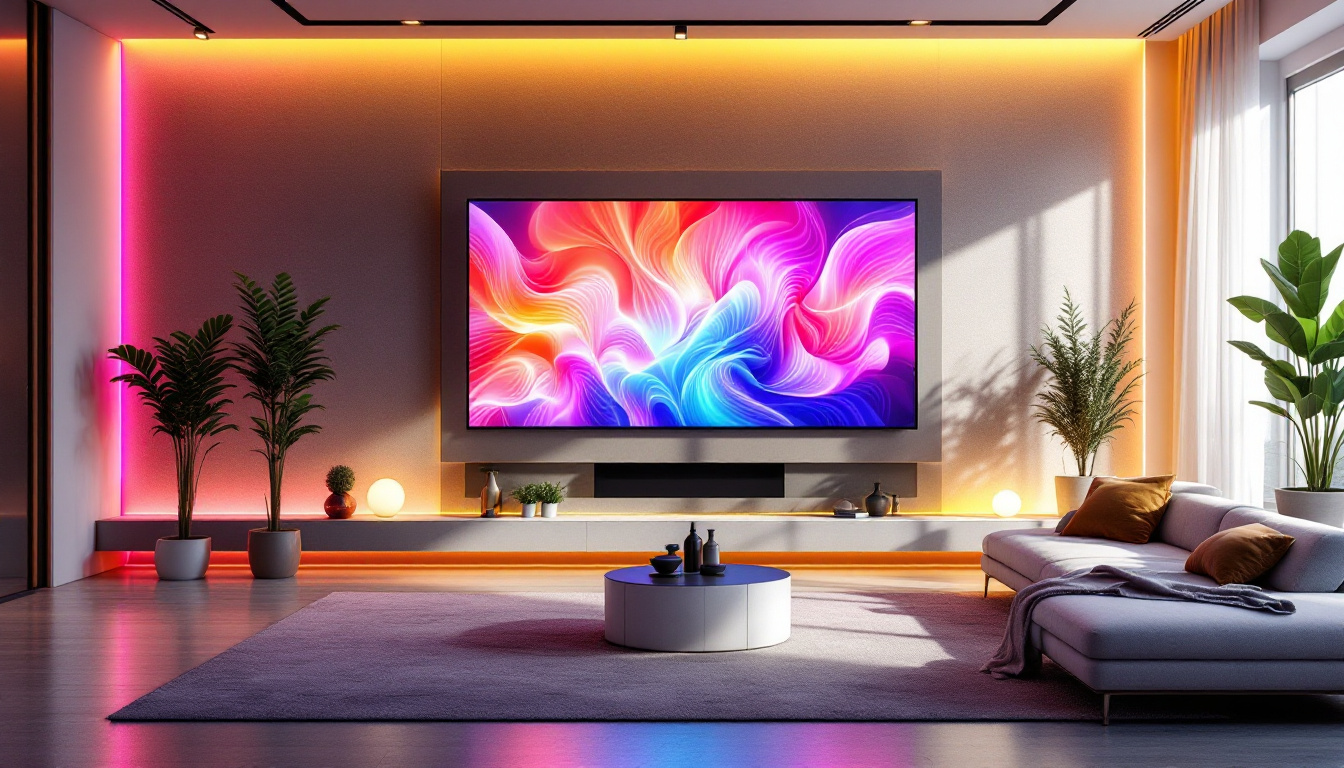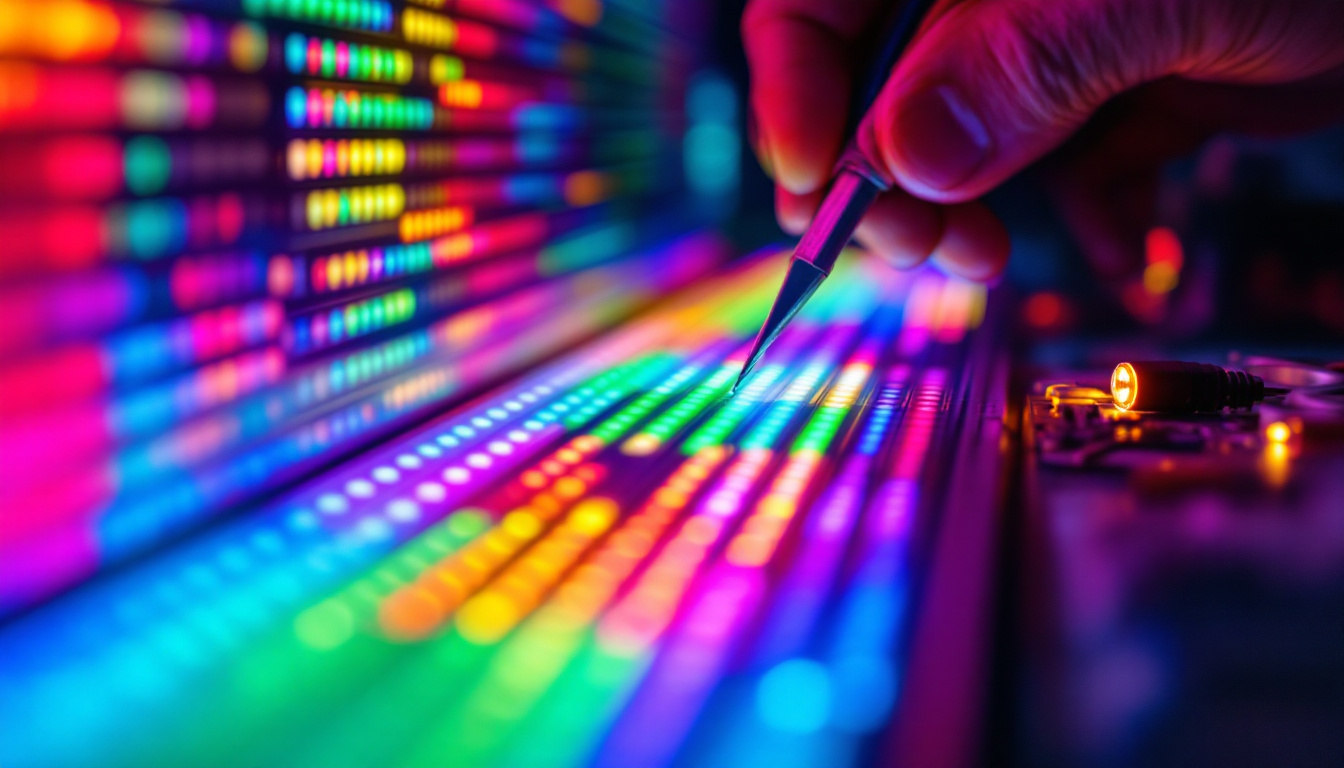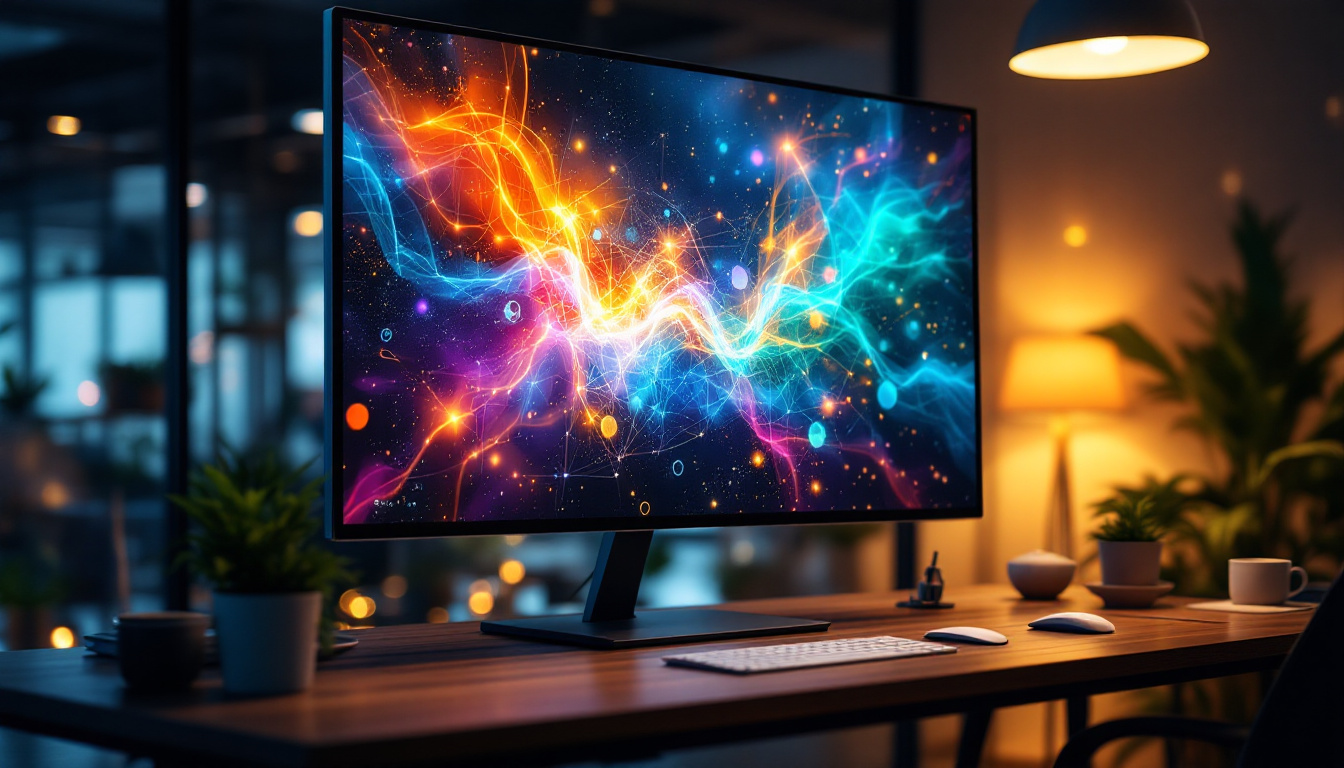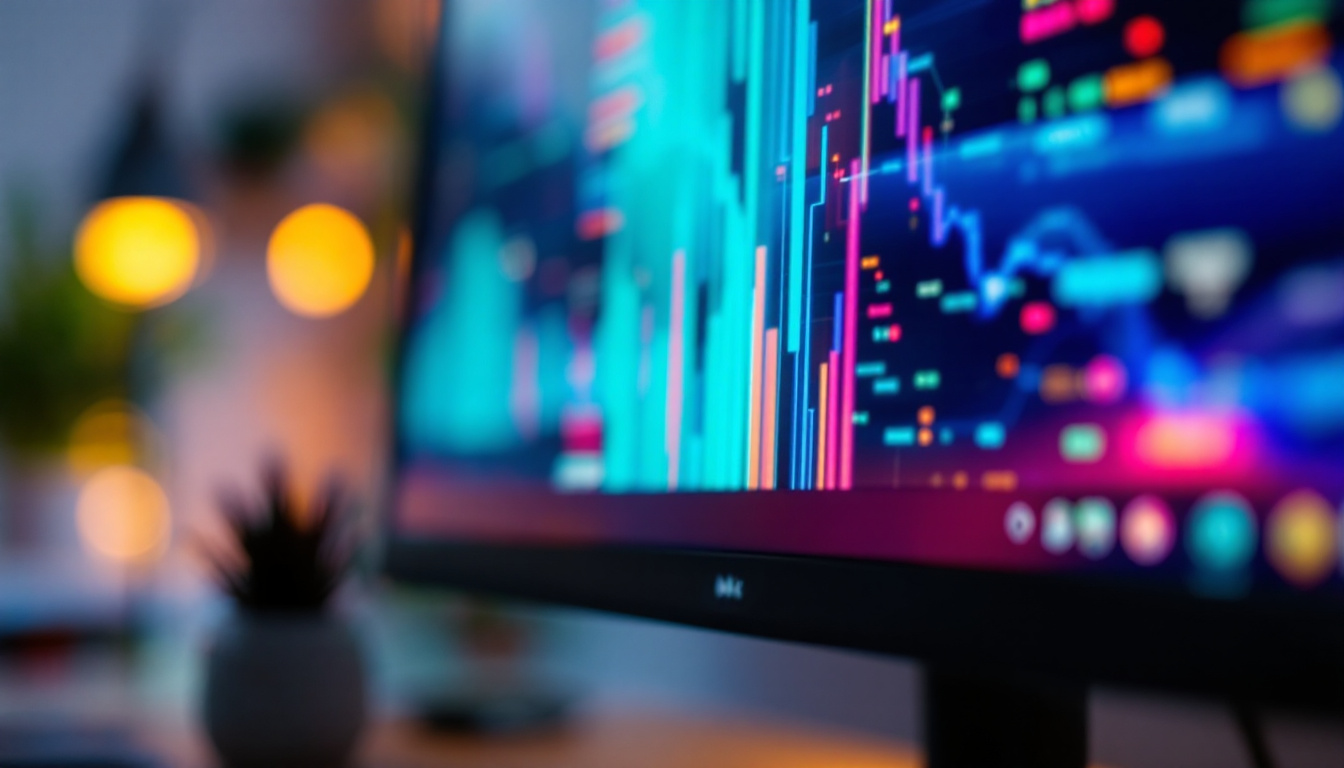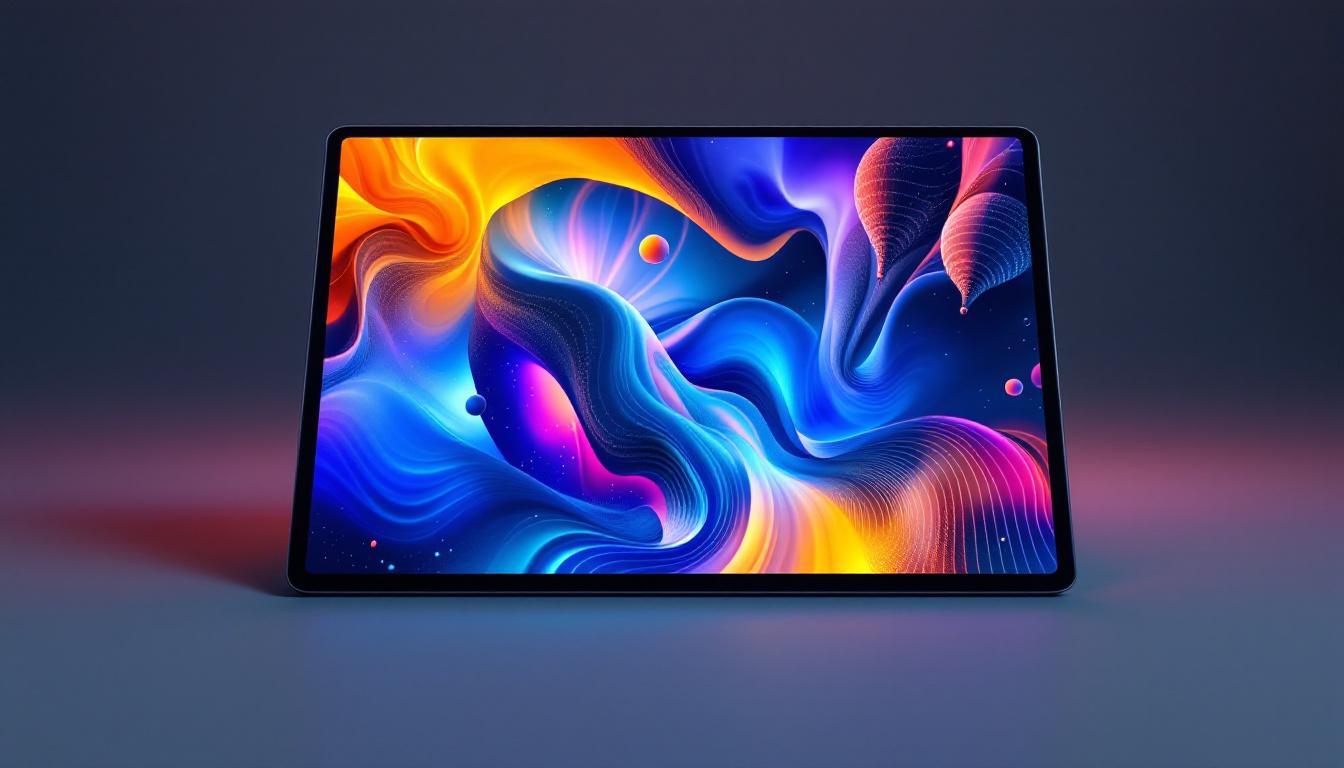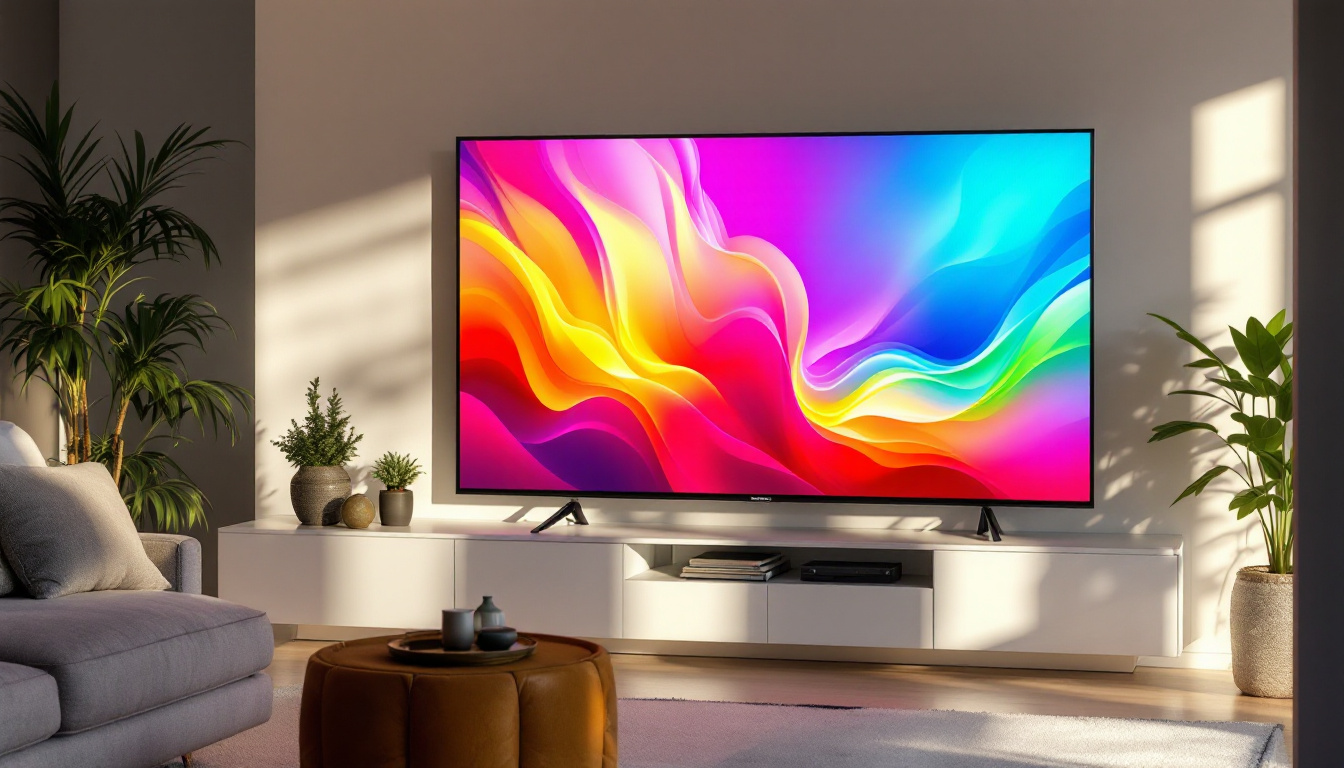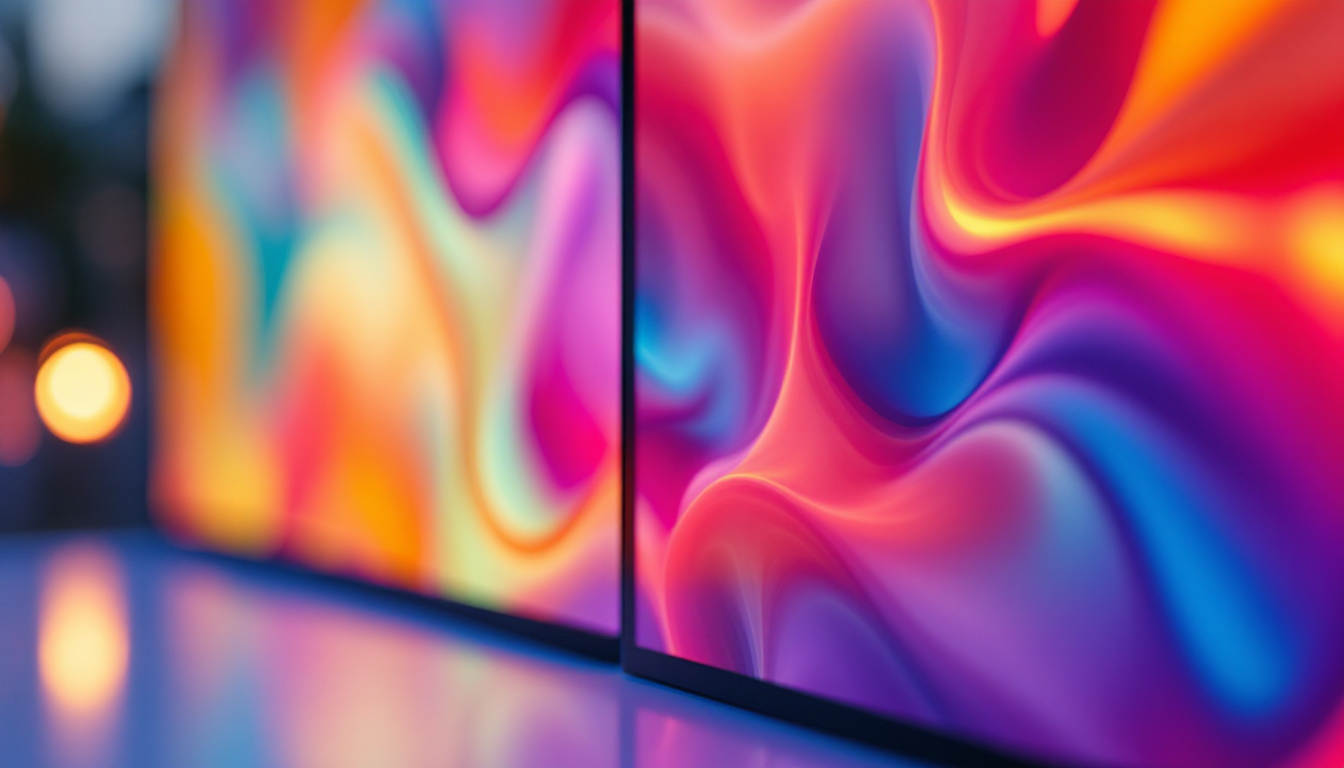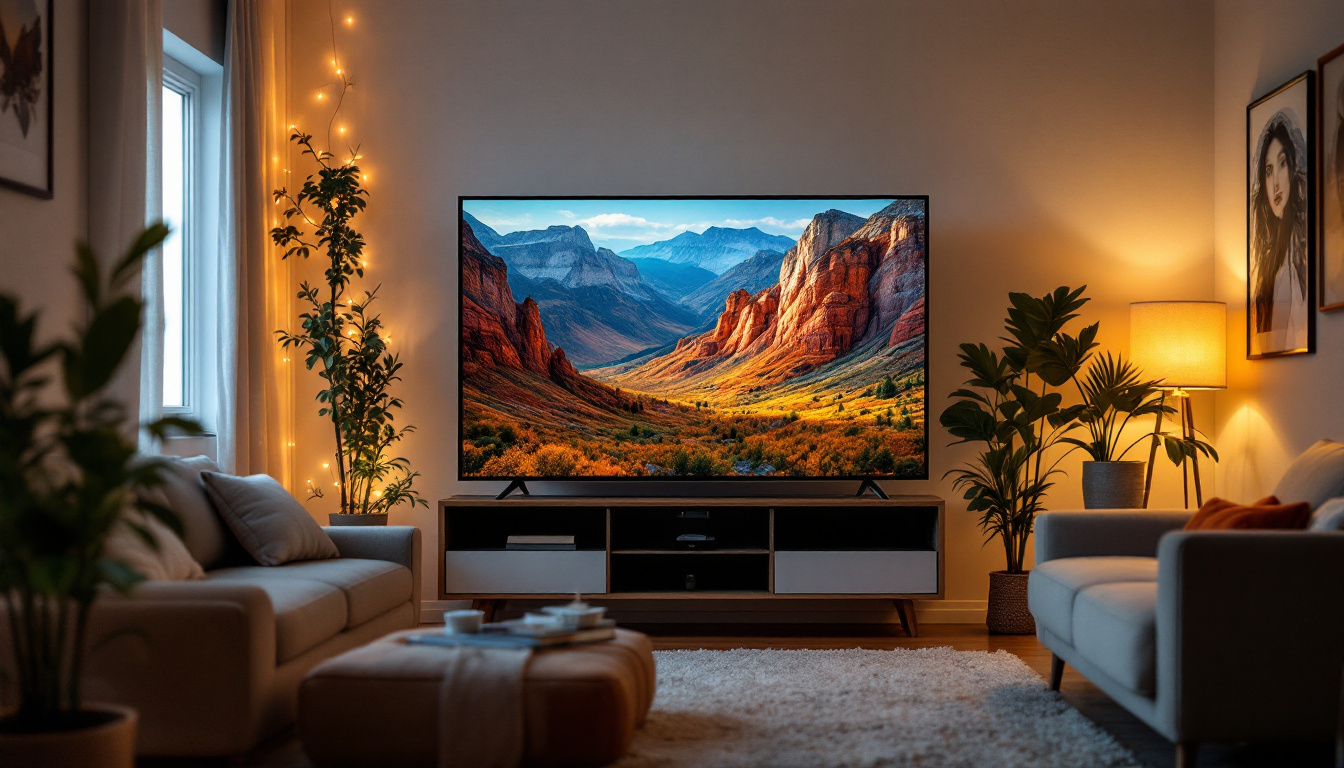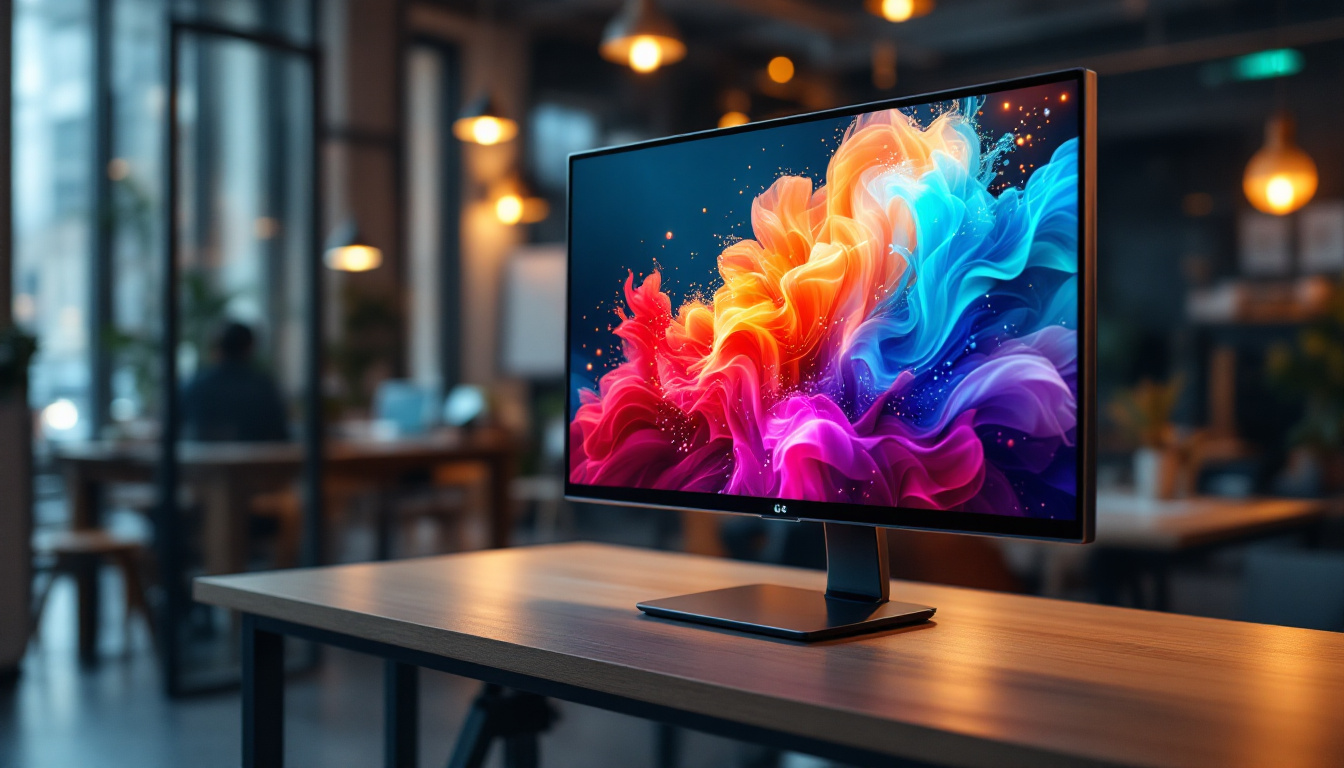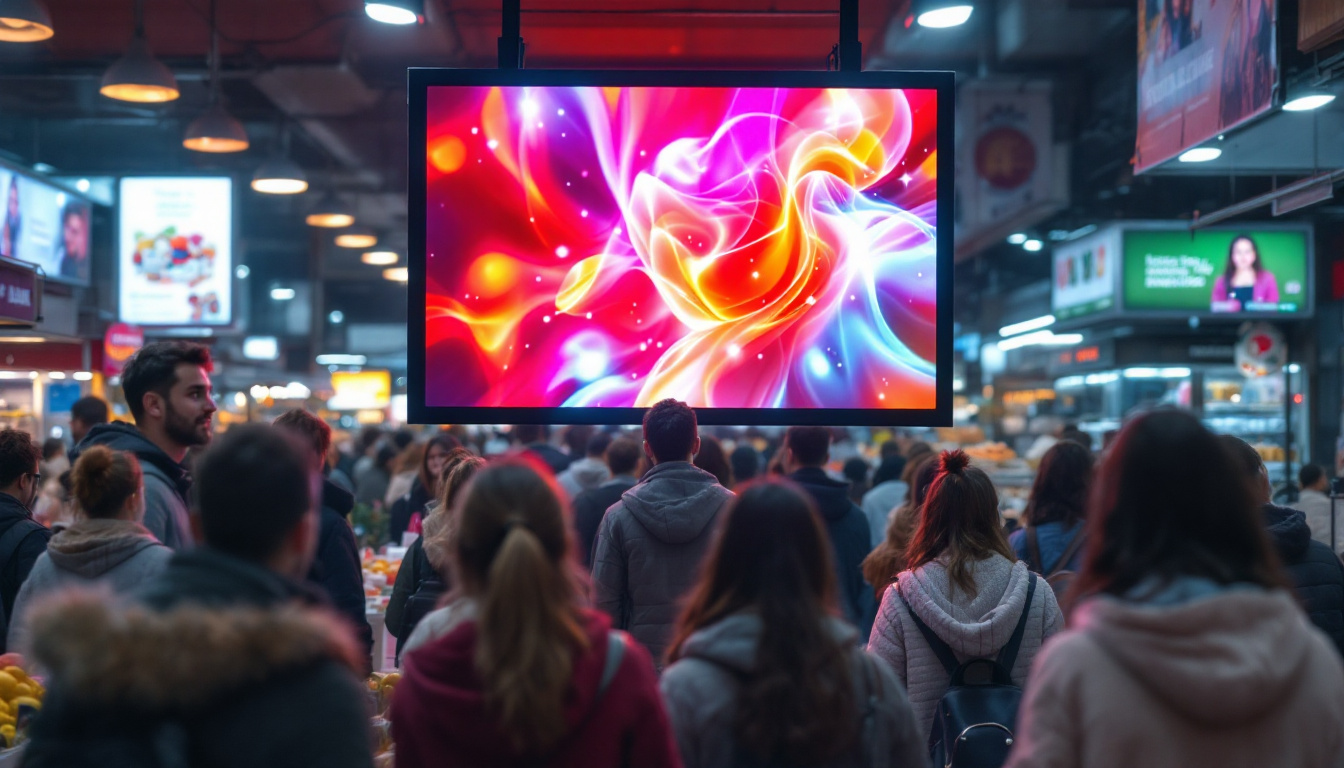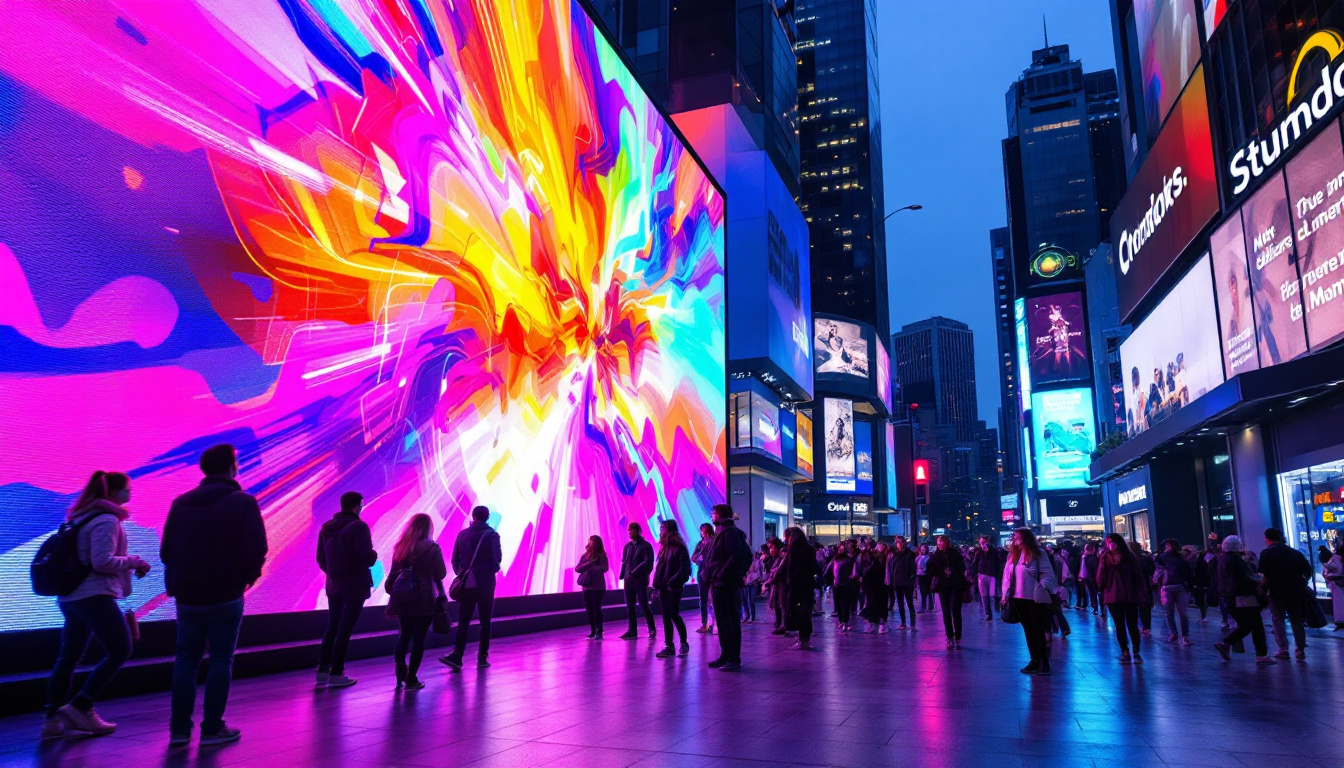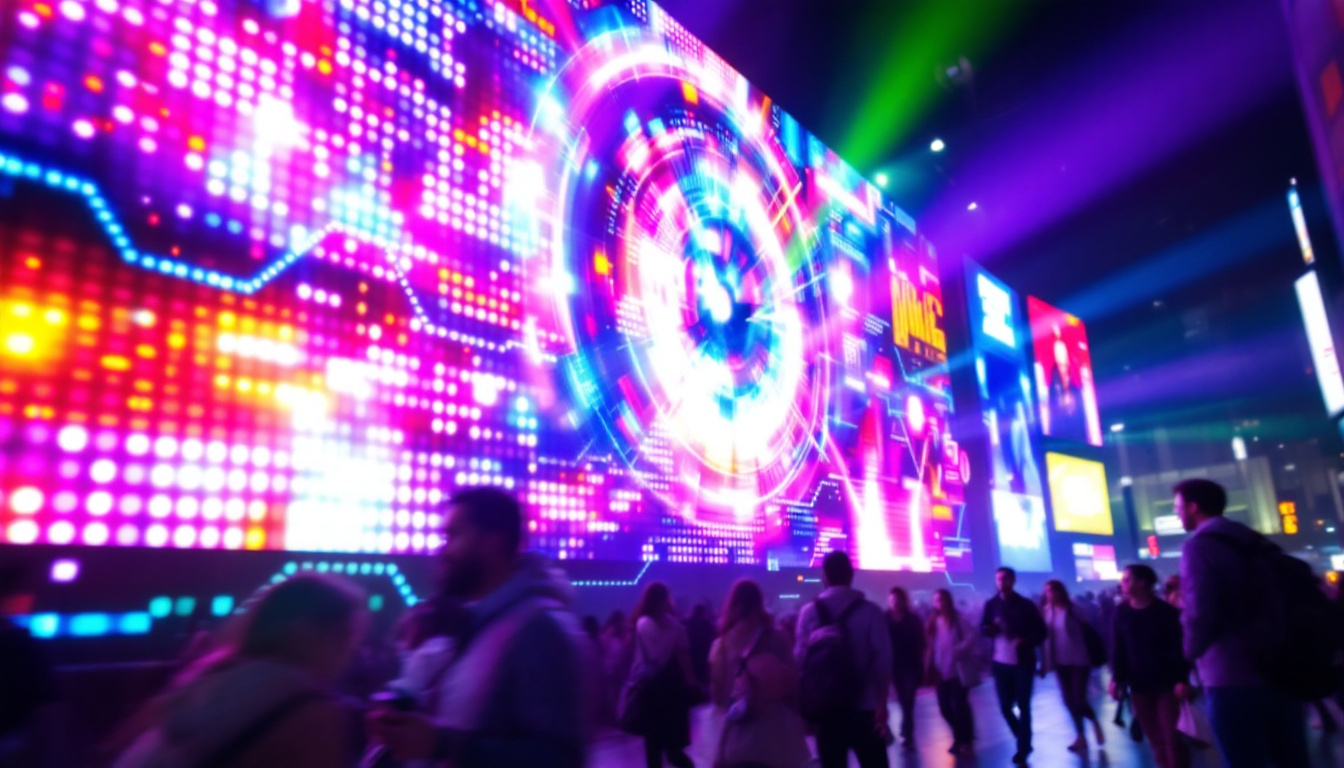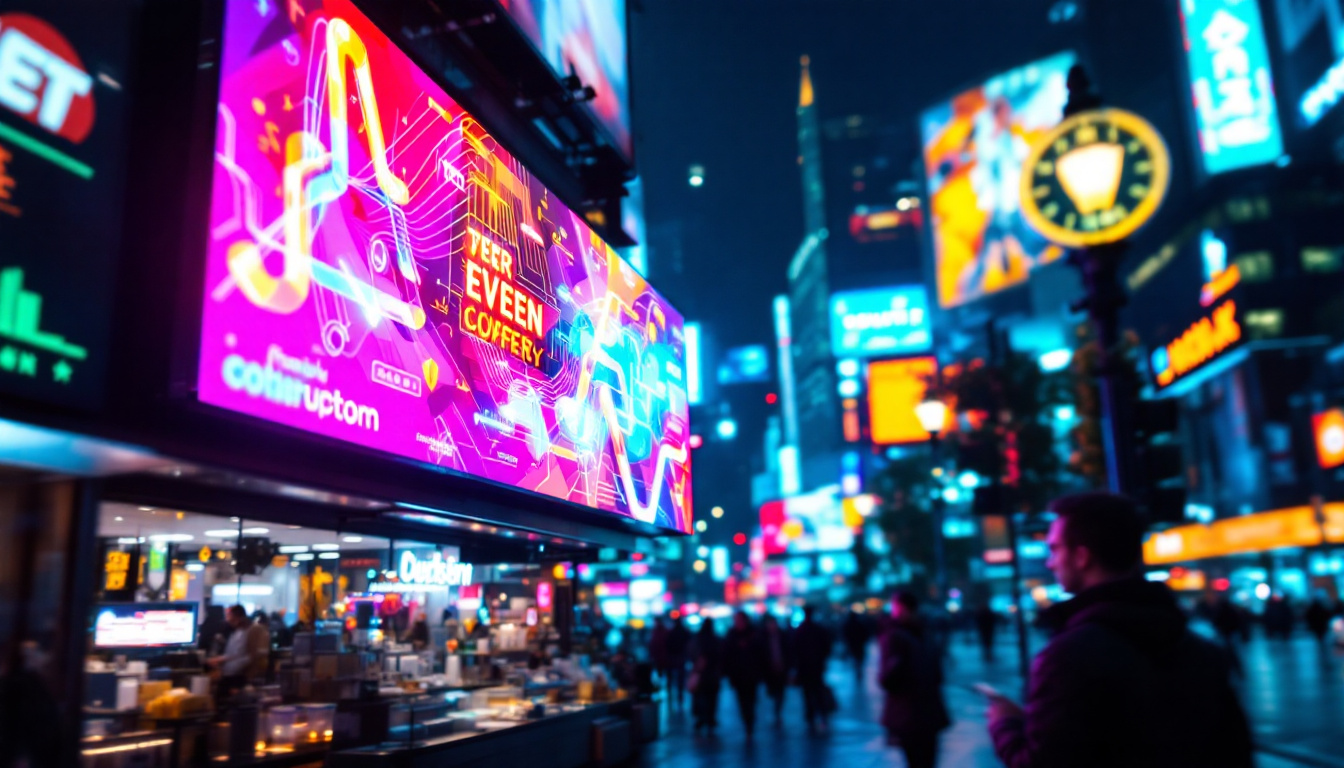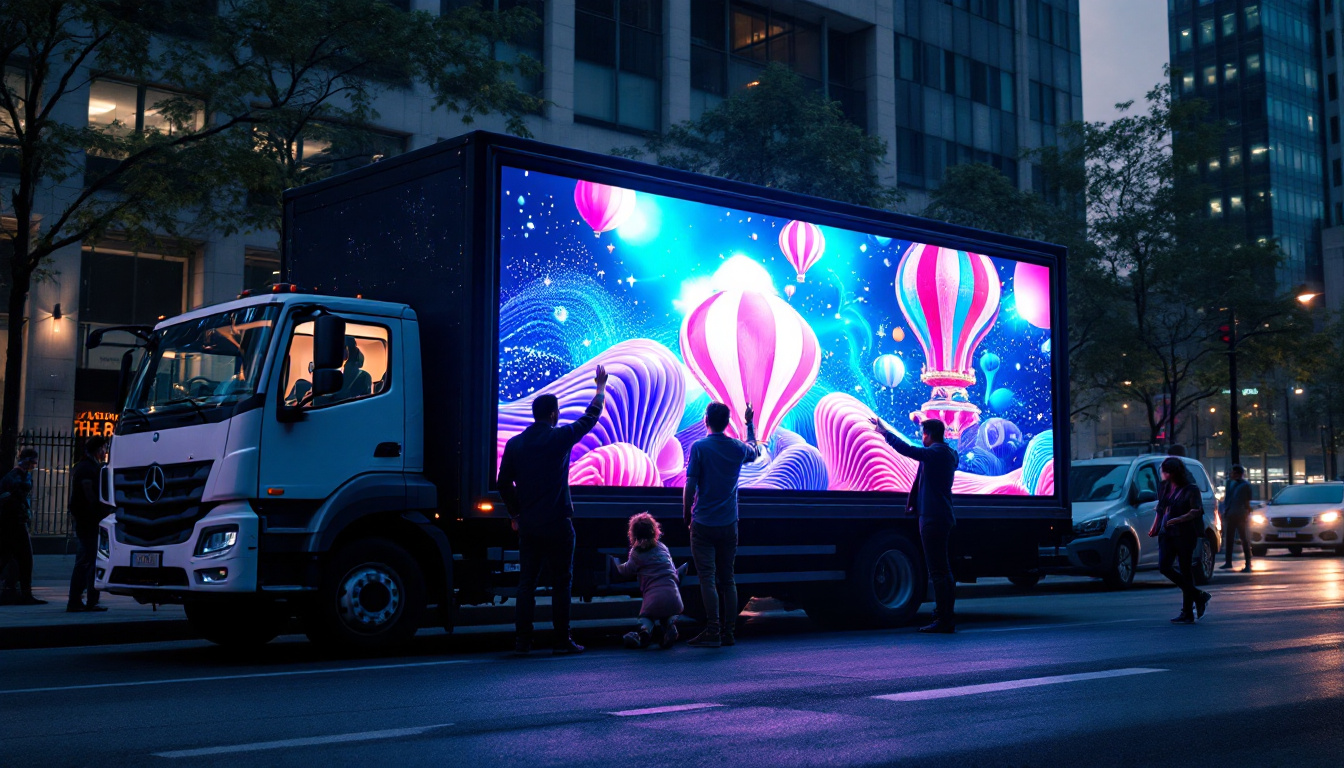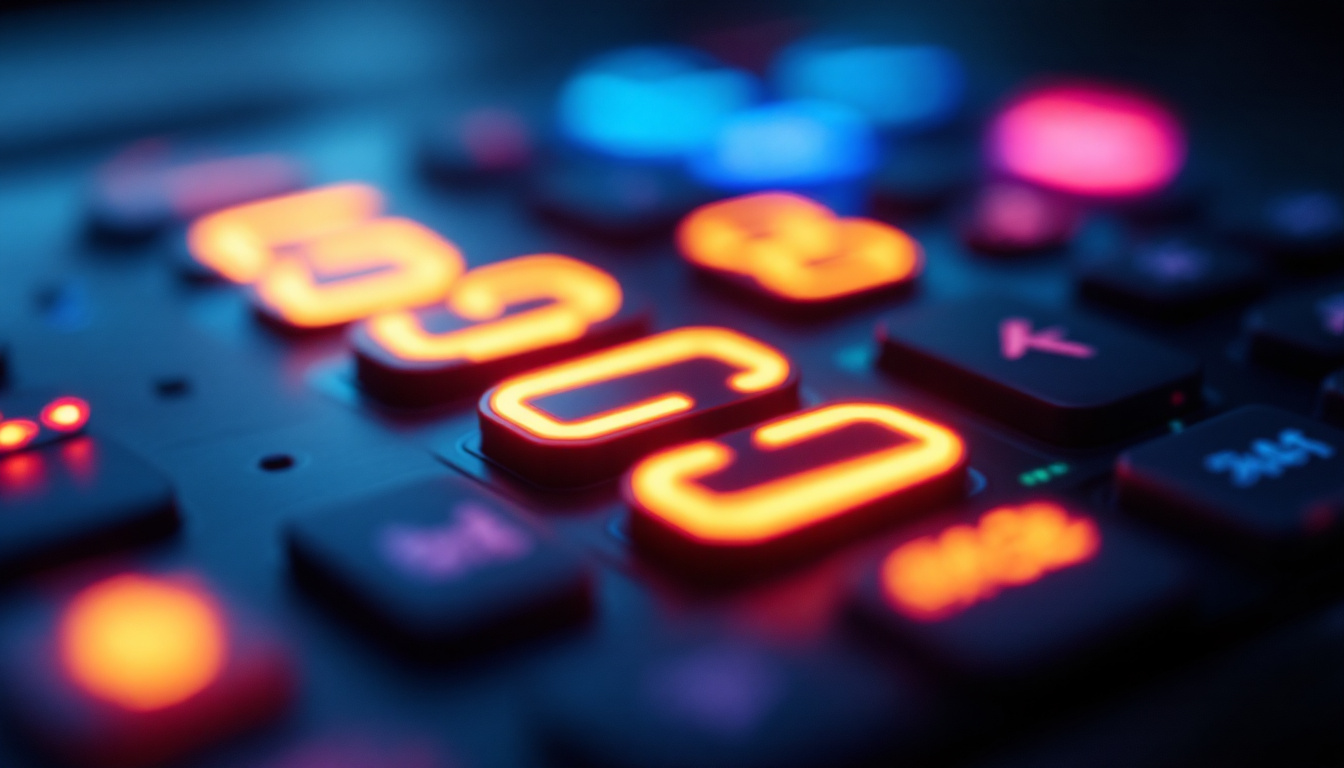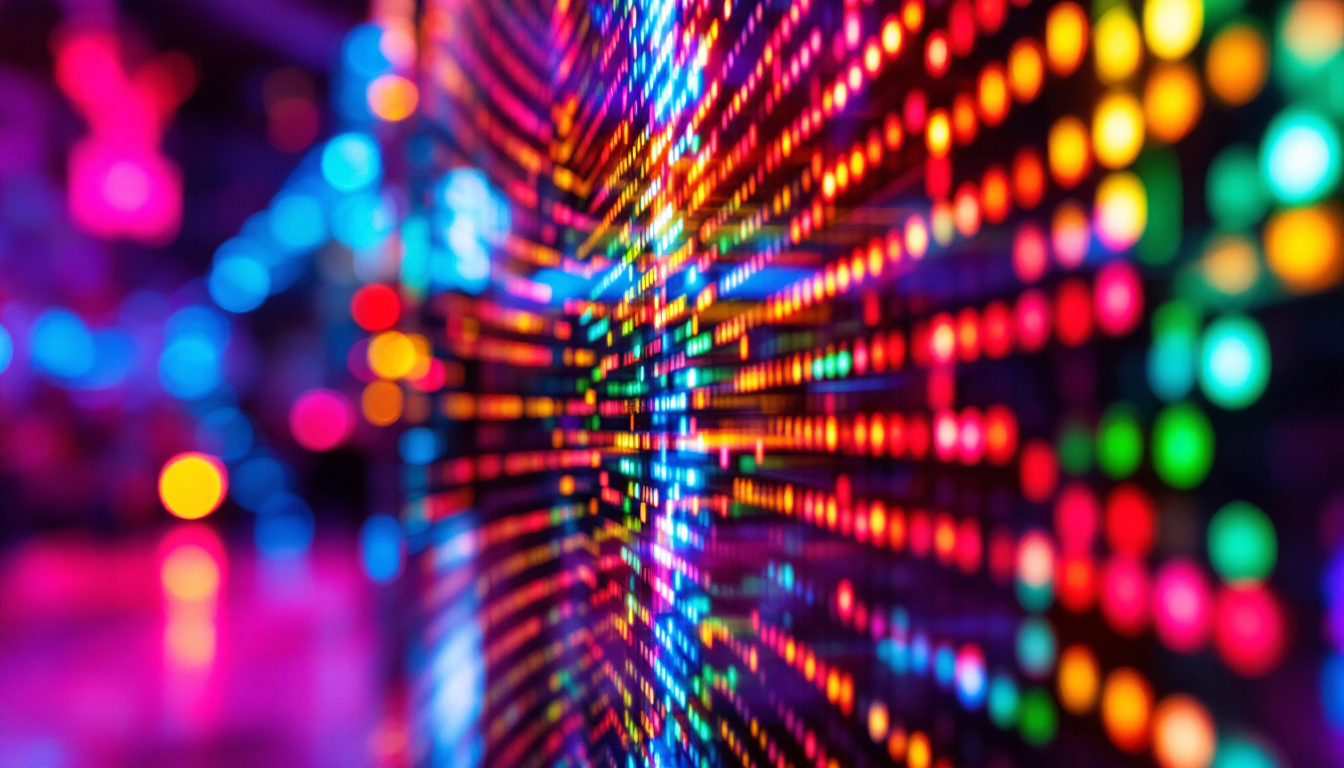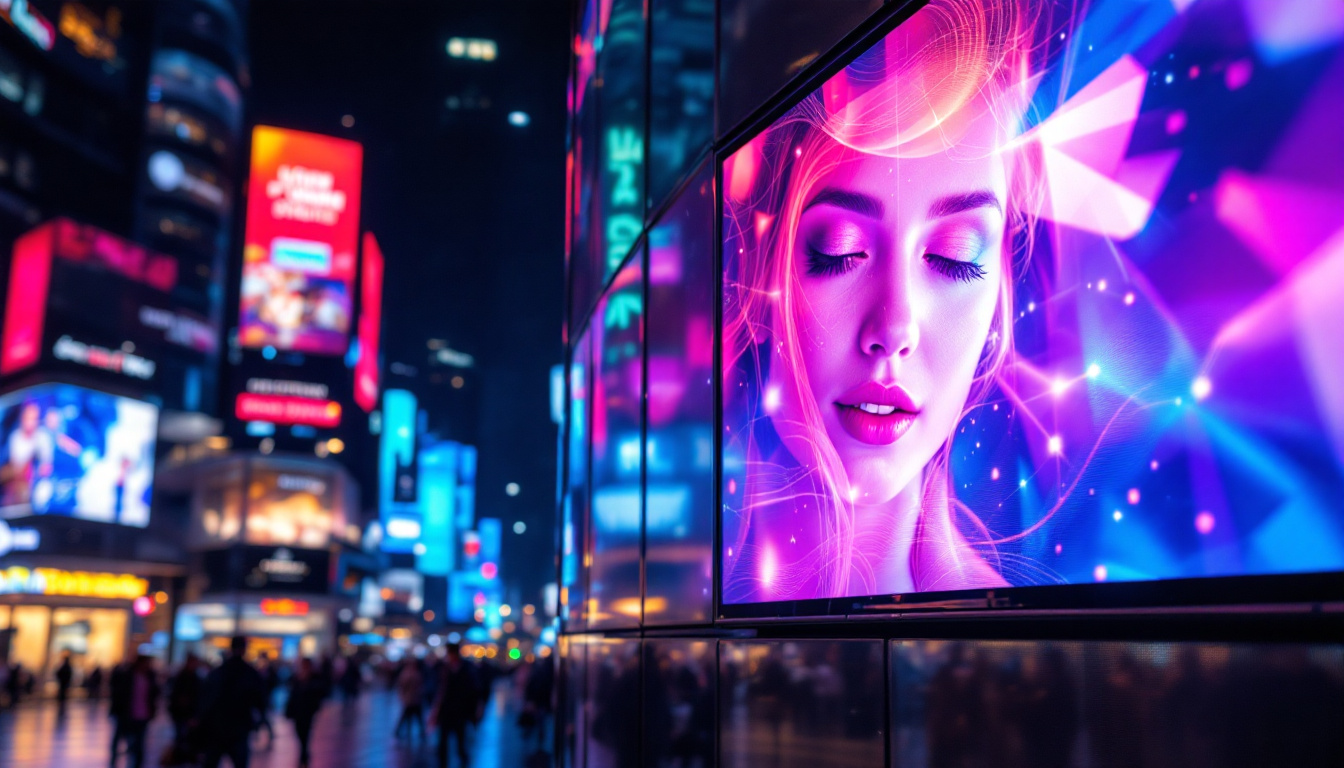In the realm of modern technology, LED displays have become ubiquitous, transforming the way information is presented and consumed. From advertising billboards to television screens, the versatility of LED technology has revolutionized visual communication. This article delves into the intricacies of LED displays, exploring their components, applications, and advantages.
Understanding LED Technology
LED, or Light Emitting Diode, is a semiconductor device that emits light when an electric current passes through it. Unlike traditional lighting methods, LEDs are energy-efficient and long-lasting, making them an ideal choice for various applications. Their compact size and versatility allow for innovative designs in everything from household lighting to large-scale advertising displays.
How LEDs Work
The fundamental principle behind LEDs lies in electroluminescence. When electrons move through the semiconductor material, they recombine with electron holes, releasing energy in the form of photons. This process creates visible light, which can be manipulated to produce different colors based on the materials used in the semiconductor. The efficiency of this process means that LEDs convert a higher percentage of electricity into light compared to incandescent bulbs, which waste a significant amount of energy as heat.
LEDs can be categorized into two main types: single-color and full-color. Single-color LEDs emit light in one specific color, while full-color LEDs combine red, green, and blue (RGB) components to create a wide spectrum of colors. This RGB combination is crucial for applications such as video displays, where vibrant and dynamic visuals are essential. Additionally, advancements in technology have led to the development of white LEDs, which are commonly used in residential and commercial lighting, providing a warm and inviting atmosphere while maintaining energy efficiency.
Components of an LED Display
An LED display consists of several key components that work together to produce high-quality images and videos. The primary elements include:
- LED Modules: These are the building blocks of an LED display, containing multiple LEDs arranged in a grid pattern. The size and resolution of the modules determine the overall quality of the display. Higher resolution modules are essential for applications requiring detailed imagery, such as digital billboards and indoor screens.
- Control System: This system manages the input signals and ensures that the correct images and videos are displayed. It can be programmed to handle various content types, including live feeds and pre-recorded material. Advanced control systems also allow for real-time adjustments to brightness and color, ensuring optimal viewing conditions regardless of the environment.
- Power Supply: LED displays require a stable power source to function efficiently. The power supply converts AC voltage into the DC voltage needed for the LEDs. Additionally, modern power supplies are designed to be energy-efficient and often include features such as surge protection to enhance the longevity of the display.
Beyond these core components, LED displays often incorporate advanced technologies such as pixel mapping and video processing to enhance visual quality. Pixel mapping allows for precise control over each individual LED, enabling stunning visual effects and seamless transitions between images. Video processors can upscale lower resolution content to fit high-resolution displays, ensuring that all content looks its best. This combination of technologies makes LED displays not only visually striking but also highly adaptable to a variety of settings, from concerts and sporting events to retail environments and public installations.
Applications of LED Displays
LED displays have found their way into numerous industries, proving their versatility and effectiveness. Their applications range from entertainment to information dissemination.
Advertising and Marketing
One of the most prominent uses of LED displays is in advertising. Digital billboards and signage can capture the attention of passersby with bright, dynamic content. Advertisers can easily update their messages in real-time, allowing for targeted marketing strategies that can adapt to different audiences and times of day.
Moreover, the high visibility of LED displays, even in direct sunlight, makes them an attractive option for outdoor advertising. Brands can leverage the technology to create immersive experiences that engage consumers and enhance brand recall.
Entertainment and Events
In the entertainment industry, LED displays have become essential for concerts, sporting events, and festivals. Large-scale LED screens provide audiences with clear visuals, ensuring that everyone can enjoy the performance, regardless of their seating position.
Additionally, LED technology allows for creative stage designs, with screens that can change shape and size, enhancing the overall aesthetic of the event. The integration of LED displays into live performances has transformed the way artists connect with their audiences, creating a more engaging experience.
Information and Communication
LED displays are also widely used for information dissemination in public spaces. Train stations, airports, and shopping malls utilize LED screens to provide real-time updates on schedules, directions, and promotions. This instant access to information helps improve the overall experience for travelers and shoppers alike.
Furthermore, LED displays can be employed in educational settings, where they serve as interactive teaching tools. Their ability to present multimedia content makes learning more engaging and effective.
Advantages of LED Displays
The popularity of LED displays can be attributed to several advantages that set them apart from traditional display technologies. Understanding these benefits can help organizations make informed decisions about their visual communication strategies.
Energy Efficiency
One of the most significant advantages of LED displays is their energy efficiency. Compared to traditional incandescent or fluorescent lighting, LEDs consume significantly less power. This not only reduces operational costs but also minimizes the environmental impact, making LEDs a more sustainable choice.
In fact, many LED displays are designed to operate on low voltage, further enhancing their energy efficiency. This feature is particularly beneficial for large-scale installations where energy consumption can become a considerable expense.
Longevity and Durability
LED displays are known for their long lifespan, often exceeding 50,000 hours of operation. This durability reduces the need for frequent replacements, leading to lower maintenance costs over time. Additionally, LED technology is more resilient to shocks and vibrations, making it suitable for outdoor and high-traffic environments.
Furthermore, the robust nature of LED displays ensures that they can withstand various weather conditions, including rain and extreme temperatures, without compromising performance.
High-Quality Visuals
LED displays offer superior image quality, with high brightness levels and excellent color accuracy. This capability allows for vibrant and eye-catching visuals that can capture the audience’s attention. The ability to adjust brightness levels also ensures optimal visibility in different lighting conditions.
Moreover, advancements in LED technology have led to the development of high-resolution displays, enabling the production of detailed images and videos. This quality is crucial for applications such as digital signage and entertainment, where clarity and precision are paramount.
Challenges and Considerations
While LED displays offer numerous advantages, there are also challenges and considerations that potential users should be aware of. Understanding these factors can help organizations make informed decisions regarding their investment in LED technology.
Initial Costs
One of the primary challenges associated with LED displays is the initial investment. The cost of purchasing and installing LED technology can be higher than traditional display options. However, it is essential to consider the long-term savings associated with energy efficiency and reduced maintenance costs.
Organizations should conduct a thorough cost-benefit analysis to determine whether the upfront investment is justified by the potential savings and benefits over time.
Technical Expertise
Implementing and maintaining LED displays may require specialized technical expertise. Organizations may need to invest in training staff or hiring professionals to ensure that the technology is used effectively and maintained properly. This requirement can add to the overall cost of ownership.
To mitigate this challenge, many manufacturers offer support and training services to help organizations maximize the potential of their LED displays.
Content Management
Effective content management is crucial for maximizing the impact of LED displays. Organizations must develop a strategy for creating and updating content regularly to keep their messaging fresh and engaging. This process can be time-consuming and may require dedicated resources.
Utilizing content management systems can streamline this process, allowing for easier updates and scheduling of content. Organizations should consider investing in software solutions that facilitate efficient content management for their LED displays.
The Future of LED Displays
The future of LED displays appears bright, with ongoing advancements in technology and increasing adoption across various industries. As the demand for high-quality visual communication continues to grow, manufacturers are innovating to enhance the capabilities of LED displays.
Emerging Technologies
One of the most exciting developments in the LED display industry is the integration of smart technology. Smart LED displays can connect to the internet, allowing for real-time content updates and interactive features. This capability opens up new possibilities for engaging audiences and delivering personalized content.
Additionally, advancements in microLED technology promise even higher resolutions and improved energy efficiency. MicroLED displays consist of tiny individual LEDs, allowing for greater flexibility in design and application. This technology is expected to play a significant role in the future of displays, particularly in consumer electronics.
Sustainability Initiatives
As environmental concerns continue to rise, the LED display industry is also focusing on sustainability initiatives. Manufacturers are exploring ways to reduce the environmental impact of production and disposal processes. This includes using recyclable materials and developing energy-efficient manufacturing practices.
Furthermore, the longevity and energy efficiency of LED displays contribute to their sustainability, making them a preferred choice for organizations looking to reduce their carbon footprint.
Conclusion
LED displays have become an integral part of modern communication, offering a dynamic and visually appealing way to convey information. Their energy efficiency, durability, and high-quality visuals make them a preferred choice for various applications, from advertising to entertainment.
While challenges such as initial costs and technical expertise exist, the long-term benefits of LED technology often outweigh these concerns. As the industry continues to evolve, organizations that embrace LED displays will be well-positioned to engage their audiences effectively and sustainably.
In a world where visual communication is paramount, understanding the intricacies of LED displays is essential for making informed decisions that drive success and innovation.
Discover LumenMatrix LED Display Solutions
Ready to elevate your visual communication strategy with the latest in LED display technology? Look no further than LumenMatrix. Our comprehensive range of LED display solutions, from Indoor and Outdoor LED Walls to innovative LED Sports and Transparent Displays, is designed to captivate your audience and amplify your message. Whether you’re looking to create immersive environments or enhance brand visibility, LumenMatrix is your partner in revolutionizing the way you connect. Check out LumenMatrix LED Display Solutions today and step into the future of dynamic visual engagement.

